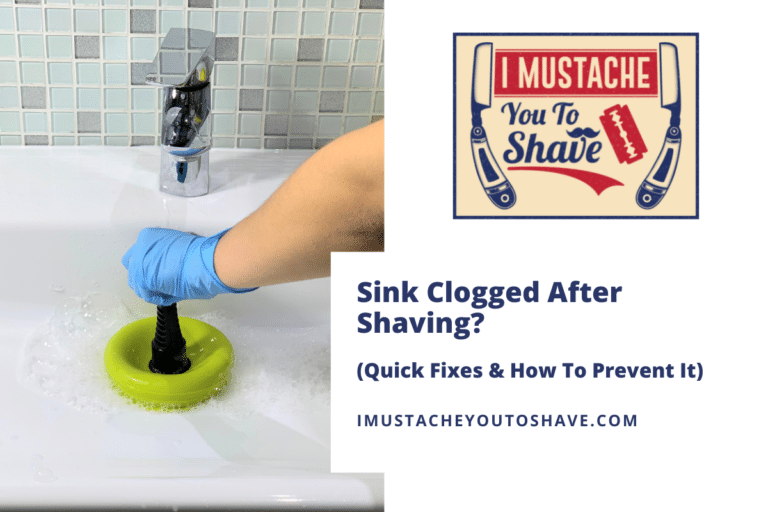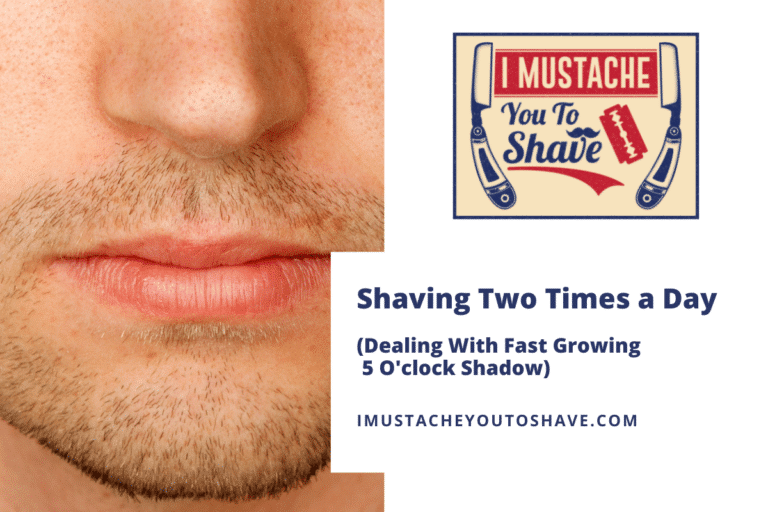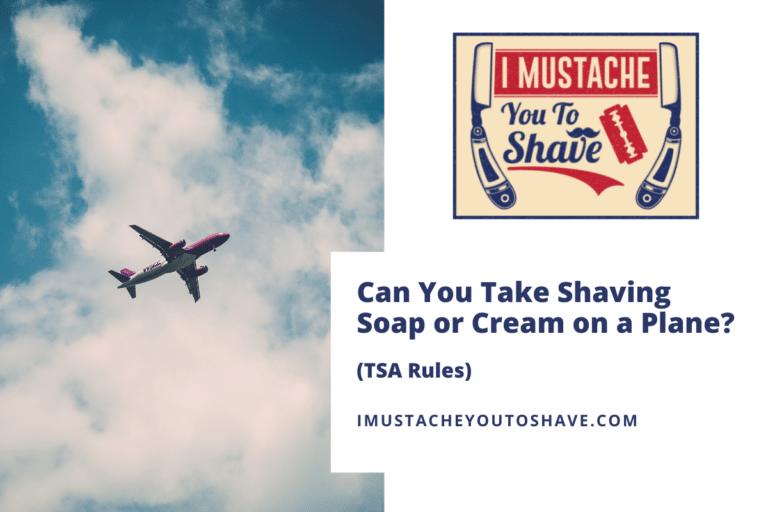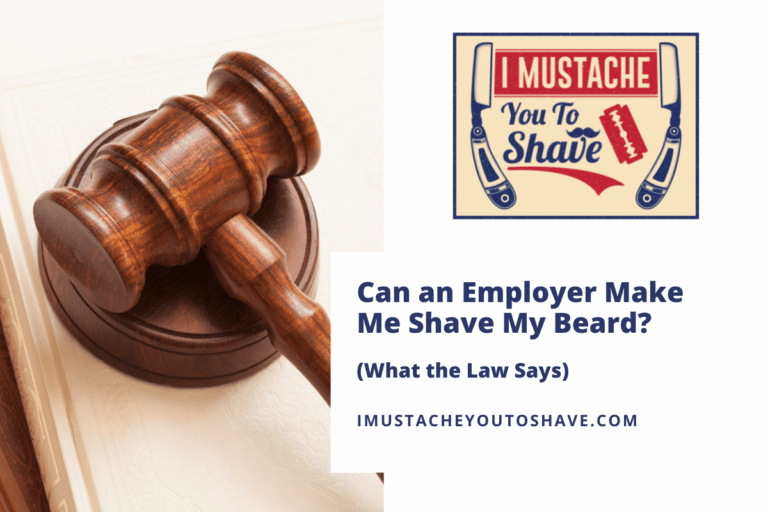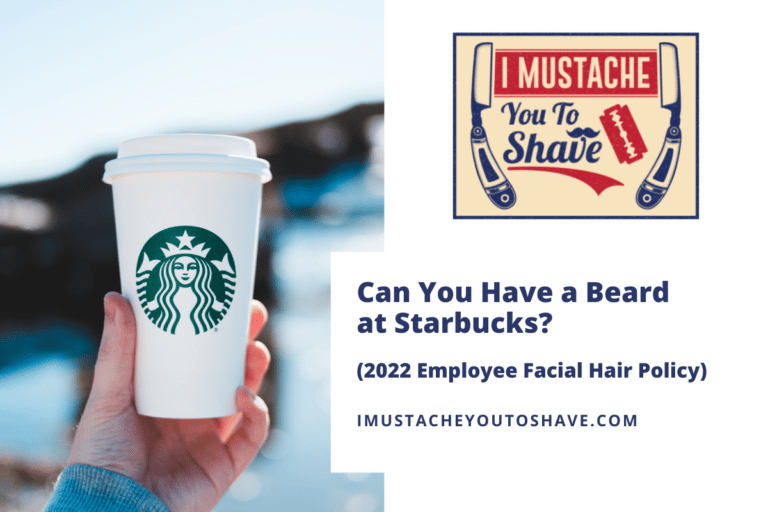Are Straight Razor Shaves Illegal? (Facts Vs Myths)
If you’re interested in a classic straight razor shave, you may be wondering whether or not you can get one from your local barbershop. They look scary – are they even legal?
In the United States, professional straight razor shaves can only be done by licensed barbers. The only state that explicitly prohibits conventional straight razors is Rhode Island, although some states have specific sanitation regulations. No matter where you live in the U.S., you can legally shave with a straight razor at home.
Keep reading to learn the legalities of a traditional straight razor shave, including who can perform them professionally and how the razor will be cleaned between shaves, as well as if you can give yourself a straight razor shave at home.
Is straight razor shaving illegal in the barbershop?
Straight razors have been around for a long time. They were commonly used in ancient Egypt thousands of years ago. It wasn’t until the 1680s that the first steel-edged straight razors were manufactured in Sheffield, England. Since then, shaving razors have evolved into safety razors and today’s disposable multi-razor cartridges.
These days, many people regard straight razors as scary, dangerous, and potentially illegal. There is no reason to be afraid of them when handled properly and responsibly, and they are certainly not illegal.
One of the reasons people may assume that straight razors are illegal is because new information began to come out that bloodborne infectious diseases such as Hepatitis B, C, and HIV-A may be a consequence of using a straight razor, as these diseases can spread easily if the barber is using improperly sanitized razors. This is, in fact, true, and during the 1980s and 1990s, health authorities updated code to keep both clients and practitioners safe.
Across the United States, straight razors are allowed by any licensed barber as long as the razor is properly sanitized through a specific procedure. The only exception to this is Rhode Island which explicitly prohibits straight razors from being used.
Other than that, there are no state-specific regulations, although New York, California, and Oregan have specific sanitization rules that must be followed.
To guarantee that the requirements are met and the razor is sharp and safe to use for each client, here is a sanitization process that is in accordance with the California Board of Barbering & Cosmetology:
- Rinse and dry the entire razor with a clean towel.
- Strop the razor.
- Immerse the razor and closed scales in a high-level disinfectant (such as Barbicide Plus) that is approved by the board for the manufacturer’s recommended duration.
- Rinse and dry the razor with a clean towel. Place in a sealed container for storage before use.
- When the shave is completed, repeat steps 1-4 to be prepared for the next client.
- Always sanitize the razor thoroughly before each and every client.
You do NOT need any special certifications to do a straight razor shave on a client, although you can do optional certifications that will help you get more training and experience with the blade. All you need is a barbering license.
Now you know that to get a straight razor shave at all, you will need to be a licensed barber or have a barber that will do a straight razor shave on you. Generally, before a candidate is legally allowed to use a straight razor on the public, they must pass both written and practical exams to ensure they are qualified. This makes sense as you would not want someone who is not specially trained with experience to use such a sharp instrument on your face.
Can beauticians use a straight razor?
A beautician focuses primarily on hair and skincare. They may provide maintenance services like facials or waxing and basic hair care like cuts and coloring, but they are not qualified to shave a beard with any form of razor.
Beauticians are restricted to only trimming a beard or mustache with scissors.
Licensing varies by state, so be sure to check with the rules in your local area to find out who can perform a straight razor shave.
Can a cosmetologist use a straight razor?
A cosmetologist has a similar skillset to a beautician but a much broader range and more extensive training.
Depending on your state, a cosmetology license may allow you to do a straight razor shave. However, state laws vary and may require a specific barber’s license.
If you are in a state like Florida, where doing a straight razor with a cosmetology certification is illegal, then you will need to get your barber’s license before using the blade.
On the other hand, if you are in the state of Illinois, then cosmetologists are allowed to do straight razor shaves.
In New York, you may do straight razor shaves with a cosmetology license, but only if you have documented experience in straight razor shaving.
Be sure to check your state’s specific laws to determine who can perform your straight razor shave.
How do most barbershops handle straight razor shaves?
Getting a straight razor shave in a barbershop can be a great experience that leaves your face feeling smooth and makes you feel relaxed and rejuvenated. Generally, a shave from a professional barber with a straight razor will run you about $20.
Most barbers use disposable straight edge razors rather than traditional straight razors for hygiene, safety, or regulatory purposes.
Some people may say they notice the difference between these two, but I have not, and I think they both feel great!
Here is the process you should expect when you go into your local barbershop to get a straight razor shave:
The barber will lean you back in a barber chair and put a nice hot towel on your face to soften up your beard. Then they will put some barber’s cleanser on your face to open up those pores and get rid of any dirt or oil to ensure you get a fantastic, close shave. After that, another towel.
The barber will either put some conditioner on your face to make the hairs softer and moisturize your face, or they will put on shaving cream from a heated dispenser so that it doesn’t irritate your skin.
They will take the straight razor to your face and start to give you that fantastic close shave.
A barber will generally use disposable straight edge razors to ensure the razor is already clean and sanitized, so they don’t have to go through the entire sanitization process that a traditional straight razor requires (including the stropping and honing).
Since any blood left on razor blades can dry out from previous clients, this can increase the risk of getting HIV or other bloodborne diseases for any future clients. Dried blood from straight razor blades is the most serious risk to using an improperly sanitized blade.
Of course, the spread of these diseases will be more common in areas where barbers do not regularly sanitize their equipment, but in the United States, it is law, so you should not have a problem. It may be a good idea to check with your barber to be sure they are sanitizing properly.
Conventional straight razors
There are several different styles of conventional straight razors. Most barbershops will use stainless steel razors, although the grind, size, and point may vary.
A “folding” or conventional straight razor has four primary characteristics:
- Metal – The most popular metal for the blade of a straight razor is carbon steel, which is easier to hone but is prone to rust if not cared for properly and the edge loses its sharpness quickly. Barbershops, however, prefer stainless steel blades because they hold their edge longer and doesn’t require as much maintenance.
- Grind – The blade grind refers to the shape of the blade as it approaches the edge. While there are many options, they tend to fall into one of four categories: full wedge, quarter-hollow, half-hollow, and full hollow. A full wedge grind can cut through a thicker beard with ease, while a full hollow is the most common grind produced today and can produce an incredibly close shave.
- Size – Blade size refers to the width of the blade, not its length. Some users will recommend a larger width (8/8 or 1″) for heavier beards or a smaller width (such as 4/8 or .5″) for smaller, harder to reach parts of the face. This one really comes down to personal preference, although 5/8 or 6/8 is most likely to work for you.
- Point – There is a wide variety of point options available, including round, spike, barber’s notch, Spanish, and French. Each style has its own pros and cons, but round tips are generally considered the safest because it is easier to work around the nose and ears without making any stray cuts.
Changeable blade (or disposable) straight razors
Straight razors with disposable blades are a great choice for barbers because they do not require daily stropping, periodic honing, and other maintenance. They still give that fantastic shave that a conventional straight razor does.
Disposable straight razors have a feature that lets you clasp or slot a razor blade along the spine. These blades are also generally much cheaper than conventional straight razors and require less maintenance, making them a great option if using them at home!
If you choose to use one of these razors on your own, be careful as a stroke at the wrong angle can make your face easily susceptible to razor burn.
Is straight razor shaving illegal at home?
Shaving with a straight razor shaving at home is not illegal.
Before using one on yourself, be sure that you know what you are doing and that the blade is properly sanitized before each use.
If you have never used a straight razor on yourself, find some instructions on how to do it properly. Here is a great video that explains how to use a straight razor on yourself:


